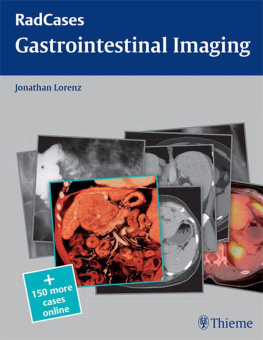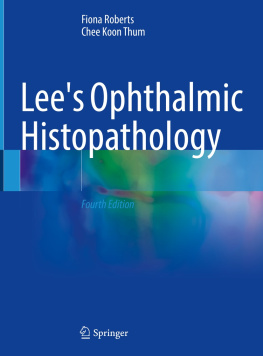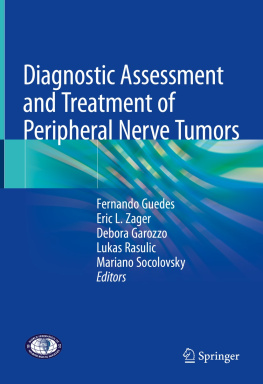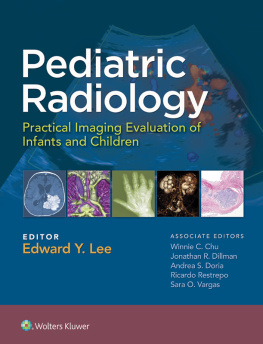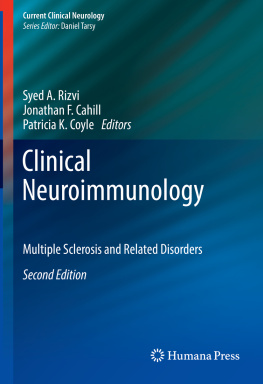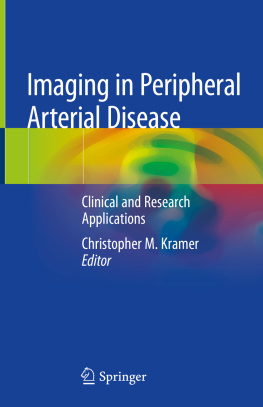Companion to Peripheral Neuropathy
Illustrated Cases and New Developments
Peter J. Dyck, MD
Professor of Neurology, Roy E. and Merle Meyer Professor of Neuroscience, Mayo Clinic College of Medicine, Head of the Peripheral Nerve Research Laboratory, Consultant in Neurology, Department of Neurology, Mayo Clinic, Rochester, Minnesota
P. James B. Dyck, MD
Associate Professor of Neurology, Head of the Peripheral Nerve Laboratory and Peripheral Nerve Section, Department of Neurology, Mayo Clinic, Rochester, Minnesota
JaNean K. Engelstad, HT
Peripheral Nerve Research Laboratory, Department of Neurology, Mayo Clinic College of Medicine, Rochester, Minnesota
Phillip A. Low, MD
Robert D. and Patricia E. Kern Professor of Neurology, Mayo Clinic College of Medicine, Consultant Department of Neurology, Mayo Clinic, Rochester, Minnesota
Kimberly K. Amrami, MD
Professor of Radiology, Department of Radiology, Mayo Clinic College of Medicine, Consultant in Radiology and Neurologic Surgery, Chair, Division of Body MRI, Mayo Clinic, Rochester, Minnesota
Robert J. Spinner, MD
Professor Departments of Neurological Surgery, Orthopedics, and Anatomy, Mayo Clinic, Rochester, Minnesota
Christopher J. Klein, MD
Associate Professor of Neurology, Department of Neurology, Mayo Clinic, Rochester, Minnesota
Saunders
Front matter
Companion to Peripheral Neuropathy
Illustrated Cases and New Developments
Companion to Peripheral Neuropathy
Illustrated Cases and New Developments
Peter J. Dyck, MD, Professor of Neurology, Roy E. and Merle Meyer Professor of Neuroscience, Mayo Clinic College of Medicine, Head of the Peripheral Nerve Research Laboratory, Consultant in Neurology, Department of Neurology, Mayo Clinic, Rochester, Minnesota
P. James B. Dyck, MD, Associate Professor of Neurology, Head of the Peripheral Nerve Laboratory and Peripheral Nerve Section, Department of Neurology, Mayo Clinic, Rochester, Minnesota
JaNean K. Engelstad, HT, Peripheral Nerve Research Laboratory, Department of Neurology, Mayo Clinic College of Medicine, Rochester, Minnesota
Phillip A. Low, MD, Robert D. and Patricia E. Kern Professor of Neurology, Mayo Clinic College of Medicine, Consultant Department of Neurology, Mayo Clinic, Rochester, Minnesota
Kimberly K. Amrami, MD, Professor of Radiology, Department of Radiology, Mayo Clinic College of Medicine, Consultant in Radiology and Neurologic Surgery, Chair, Division of Body MRI, Mayo Clinic, Rochester, Minnesota
Robert J. Spinner, MD, Professor Departments of Neurological Surgery, Orthopedics, and Anatomy, Mayo Clinic, Rochester, Minnesota
Christopher J. Klein, MD, Associate Professor of Neurology, Department of Neurology, Mayo Clinic, Rochester, Minnesota
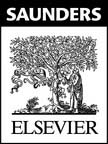
Copyright

COMPANION TO PERIPHERAL NEUROPATHY: ILLUSTRATED CASES AND NEW DEVELOPMENTS
ISBN: 978-1-4377-0001-5
Copyright 2010 by Saunders, an imprint of Elsevier Inc.
All rights reserved. No part of this publication may be reproduced or transmitted in any form or by any means, electronic or mechanical, including photocopying, recording, or any information storage and retrieval system, without permission in writing from the publisher. Permissions may be sought directly from Elseviers Rights Department: phone: (+1) 215 239 3804 (US) or (+44) 1865 843830 (UK); fax: (+44) 1865 853333; e-mail: www.healthpermissions@elsevier.com. You may also complete your request on-line via the Elsevier website at http://www.elsevier.com/permissions.
Notice
Knowledge and best practice in this field are constantly changing. As new research and experience broaden our knowledge, changes in practice, treatment and drug therapy may become necessary or appropriate. Readers are advised to check the most current information provided (i) on procedures featured or (ii) by the manufacturer of each product to be administered, to verify the recommended dose or formula, the method and duration of administration, and contraindications. It is the responsibility of the practitioner, relying on their own experience and knowledge of the patient, to make diagnoses, to determine dosages and the best treatment for each individual patient, and to take all appropriate safety precautions. To the fullest extent of the law, neither the Publisher nor the Editors assumes any liability for any injury and/or damage to persons or property arising out of or related to any use of the material contained in this book.
The Publisher
Library of Congress Cataloging-in-Publication Data
Companion to Peripheral neuropathy : illustrated cases and new developments / Peter James Dyck [et al.].
p. ; cm.
Includes bibliographical references.
ISBN 978-1-4377-0001-5
1. Nerves, PeripheralDiseasesCase studies. I. Dyck, Peter James, 1927- II. Peripheral neuropathy.
[DNLM: 1. Peripheral Nervous System DiseasesCase Reports. 2. Peripheral Nervous System DiseasesdiagnosisCase Reports. WL 500 C737 2010]
RC409.P46 2005 Suppl.
616.85607dc22
2009053378
Acquisitions Editor: Adrianne Brigido
Developmental Editor: Taylor Ball
Project Manager: David Saltzberg
Design Direction: Lou Forgione
Printed in the United States of America
Last digit is the print number: 9 8 7 6 5 4 3 2 1
Contributors
Preface
Peter J. Dyck, P. James B. Dyck, JaNean K. Engelstad, Phillip A. Low, Kimberly K. Amrami, Robert J. Spinner, Christopher J. Klein
Companion to Peripheral Neuropathy is an extension of Peripheral Neuropathy, first to fourth editions, originally published by W.B. Saunders and then by Elsevier, Inc. Peripheral Neuropathy met the need for a comprehensive review of peripheral nerve neurobiology, pathology, and clinical disorders. P.K. Thomas, a co-editor of Peripheral Neuropathy, developed an incapacitating stroke during the preparation of the fourth edition and therefore could not participate in Companion to Peripheral Neuropathy. Thomas was an internationally renowned expert on peripheral nerve. He had a breadth of information and skill in writing and editing that we miss.
There were three developments that led to production of Companion to Peripheral Neuropathy. The first was introduction of magnetic resonance imaging (MRI)targeted fascicular nerve biopsy pioneered especially by three of the editors of this book (PJBD, KA, and RJS). The approach allows accurate anatomic localization and MRI characterization of focal nerve lesions identified by clinical and neurophysiologic studies. In appropriately chosen cases this further localization and characterization leads to surgical exposure, fascicular nerve biopsy, and pathologic identification of the pathologic process. As we demonstrate in this book, this frequently allows diagnosis not otherwise possible. However, as Jack Griffin said in discussing MRI-targeted fascicular nerve biopsy in a plenary session of the AAN, Dont do this at home. We infer that he saw the importance of the newly introduced approaches but warned against its misuse, recognizing that considerable harm could be done.
Next page

